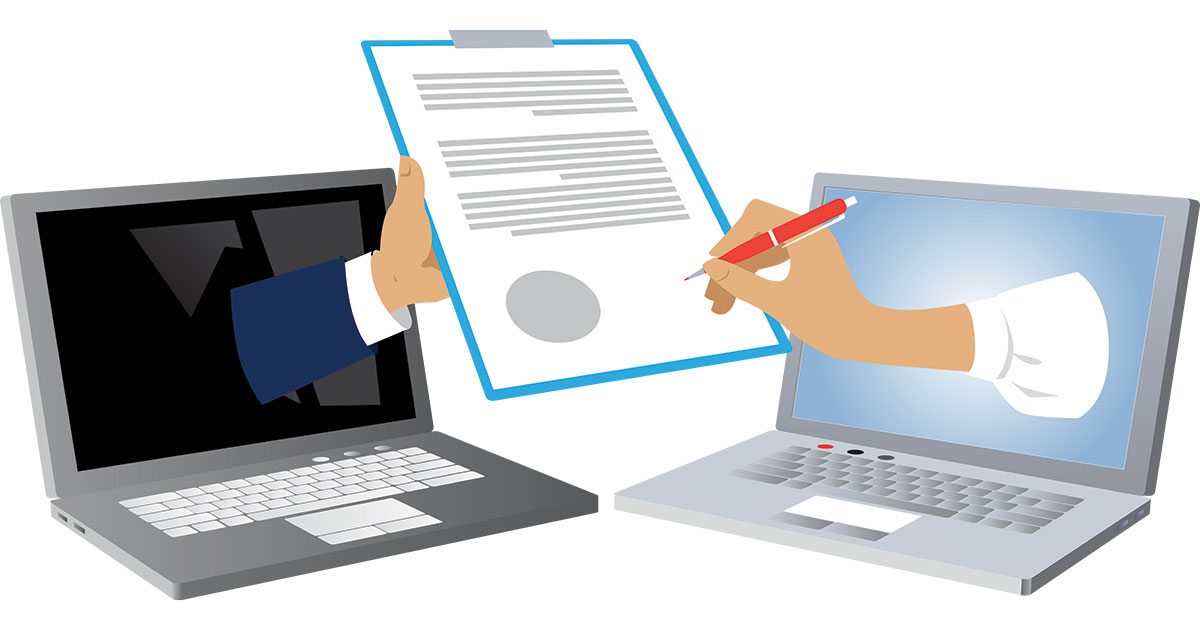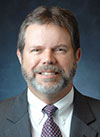
In-person witnessing and notarization of estate planning documents have always served to ensure the authenticity of a document when the testator, settlor, or principal is no longer able to confirm authenticity following death or incapacity.
The COVID-19 pandemic created a need to deviate from that approach. The challenge for state governments has been how to introduce 21st-century technology into the document-execution process while keeping the safeguards necessary to ensure the authenticity of each document and minimize opportunities for fraud, undue influence, or duress.
During the pandemic, governors in many states signed executive orders altering the requirements for execution of estate planning documents. The legality and efficacy of such orders depended on the scope of emergency rule-making authority conferred by state law.
In other states, administrative departments (for example, departments of health) or the state’s highest court passed emergency rules. Because of the time required by the legislative process, creating statutory solutions was regarded as a long-term, permanent solution rather than a short-term response to the pandemic emergency.
On April 29, 2020, the State Bar of Wisconsin’s Real Property, Probate and Trust Law Section (RPPT) petitioned the Wisconsin Supreme Court, requesting the issuance of emergency procedures for witnessing wills, codicils, powers of attorney for health care, and declarations to health-care professionals during the COVID-19 pandemic.
The petition focused on interpreting “presence” and “conscious presence” as including the use of audiovisual communication technology. The court declined to issue the requested order, indicating that legislation would be required instead. The RPPT then formed a committee, the Remote Practice Committee, and tasked it with developing a long-term, statutory solution.
As a result of the RPPT’s work, bipartisan legislation was authored by Senator Joan Ballweg (R-Markesan) and Representative Ron Tusler (R-Harrison) and passed by the Wisconsin Legislature. Governor Tony Evers signed 2023 Wis. Act 130 into law on March 21, 2024. It took effect on March 23, 2024.
Estate Planning Documents Defined
The documents covered by Wis. Stat. section 140.147(1), part of the new law, are the following:
A will or codicil;
A declaration of trust or other document creating a trust as provided in Wis. Stat. section 701.0401, or an amendment thereto;
A certification of trust under Wis. Stat. section 701.1013;
A power of attorney for finances and property;
A power of attorney for health care;
A marital property agreement or an amendment to a marital property agreement;
A written instrument evidencing a nonprobate transfer under Wis. Stat. section 705.10, 705.15, 705.18, or 766.58(3)(f);
A declaration to health-care professionals;
An authorization for final disposition;
An authorization for use and disclosure of protected health information (HIPAA authorization);
An instrument of disclaimer under Wis. Stat. section 854.13; and
An instrument exercising a power of appointment under Wis. Stat. chapter 702.
 Catherine M. Priebe, U.W. 1994 cum laude, is the co-founder of Certus Legal Group Ltd., a boutique estate planning and business succession planning law firm with offices in Milwaukee and Madison. She has extensive experience advising clients in all aspects of estate planning, business succession planning, gifting strategies, marital property issues, and probate and trust administration. She is a board member of the State Bar of Wisconsin’s Real Property, Probate and Trust Law Section, a member of the Legislative Oversight Committee, and a Fellow of the Wisconsin Law Foundation.
Catherine M. Priebe, U.W. 1994 cum laude, is the co-founder of Certus Legal Group Ltd., a boutique estate planning and business succession planning law firm with offices in Milwaukee and Madison. She has extensive experience advising clients in all aspects of estate planning, business succession planning, gifting strategies, marital property issues, and probate and trust administration. She is a board member of the State Bar of Wisconsin’s Real Property, Probate and Trust Law Section, a member of the Legislative Oversight Committee, and a Fellow of the Wisconsin Law Foundation.
 Philip J. Miller, Marquette 1987 cum laude, is a partner in Husch Blackwell LLP, Milwaukee, and focuses in estate planning, probate and trust administration, business succession planning, marital property, and tax planning. He is a board member of the State Bar of Wisconsin’s Real Property, Probate and Trust Law Section and a member of the Elder Law & Special Needs Section. He is a Fellow of the American College of Trust and Estate Counsel.
Philip J. Miller, Marquette 1987 cum laude, is a partner in Husch Blackwell LLP, Milwaukee, and focuses in estate planning, probate and trust administration, business succession planning, marital property, and tax planning. He is a board member of the State Bar of Wisconsin’s Real Property, Probate and Trust Law Section and a member of the Elder Law & Special Needs Section. He is a Fellow of the American College of Trust and Estate Counsel.
The notarization law applies to a remotely located individual, which is defined as an individual who is not in the physical presence of the notary public who performs a notarial act under new Wis. Stat. section 140.147.
The law also defines “sign.” With respect to a remotely located individual, it means the execution of an estate planning document that is required or intended to be executed in the presence of a notary public.
Uniform Requirements for Estate Planning Documents
Remote notarization is addressed in Wis. Stat. chapter 140. Remote witnessing is addressed separately in the chapters of the Wisconsin Statutes that address the documents to which each chapter relates. The six Wisconsin Statutes sections that address remote witnessing are uniform in their approach. The requirements are the following:
Two-way, real-time audiovisual communication technology must be used. Zoom, Teams, Webex, Go To Meeting, and Facetime are all examples of two-way, real-time audiovisual communication technology.
The audiovisual communication technology must allow the parties to see, hear, and interact in real time. If any party has an impairment that affects hearing, sight, or speech, assistive technology or learned skills may be substituted if the technology or skills allow that party to interact in real time. For example, sign language may be substituted for sound for a deaf person.
The signing must be supervised by an attorney in good standing licensed to practice law in Wisconsin. The supervising attorney may also serve as the notary public and one of the witnesses.
All parties must attest to being physically located in Wisconsin during the two-way, real-time audiovisual communication.
The person signing (the remotely located testator, settlor, or principal and so on) and each remote witness must identify themselves. If the parties are not known to each other and the supervising attorney, each party must display a photo identification (for example, driver’s license, state-issued identification card, passport, or military ID card).
The person signing (the remotely located testator, settlor, or principal and so on) must identify anyone else present in the same physical location and, if possible, make a visual sweep of the surroundings with the audiovisual technology so that the supervising attorney, notary public, and witnesses can confirm the presence of any other person.
The person signing must display the document, confirm the total number of pages, and indicate the number of the page on which that person’s signature will be affixed.
The person signing must declare to the supervising attorney, notary public, and witnesses that the person signing is 18 years of age or older, that the document is the signer’s will, codicil, trust, power of attorney, or other document, and that the document is being executed as a free and voluntary act. In places where current law allows another person to assist the person signing or to sign in that person’s name at that person’s direction, those provisions of current law are retained.
The document being signed must indicate that it is being executed pursuant to the applicable remote-signing statute. The supervising attorney, the notary public, and each witness must be able to see the person sign the document. A view of the signer’s head and shoulders, for example, is not sufficient, nor is a ceiling shot if the signer must temporarily put down a phone or tablet to be able to sign the document.
Transmission and Signing of Documents
The new law contains three options for transmitting and completing the signed document(s).
Option 1. Under option 1, the person signing or someone at the signer’s direction delivers the document personally or by U.S. mail or commercial courier to the supervising attorney, who then forwards the original document to the notary public or first witness. In the case of witnessing, the first witness signs and forwards the original to the second witness, who then signs and returns the document to the supervising attorney.
In situations in which the supervising attorney and an office assistant serve as the notary public and witnesses from the attorney’s office, this is perhaps the easiest option because it only requires the remotely located signer to deliver the document to the supervising attorney.
The subsequent witnessing and notarization can all occur in the attorney’s office. If the supervising attorney meets with the signer at the signer’s home or another location outside the attorney’s office, the ability to have someone witness remotely eliminates the need to have the attorney bring a second witness or for the signer to ask a friend or neighbor to act as a second witness.
Option 2. In option 2, the person signing or someone at the signer’s direction delivers the document personally or by U.S. mail or commercial courier to the supervising attorney and delivers copies of the entire signed document to the notary public and each witness. The notary public and the witnesses then notarize or sign and send the notarized or signed copy to the supervising attorney.
The multiple documents together will constitute one original unless the supervising attorney, within a reasonable time after receiving the signed original and signed copies, compiles the signed copies into the original by attaching the signature pages of the notary public and each remote witness to the signed original.
Option 3. In option 3, the person signing, the notary public, and each remote witness sign identical copies of the original document and deliver the signed originals personally or by U.S. mail or commercial courier to the supervising attorney. The multiple originals together will constitute one original unless the supervising attorney, within a reasonable time after receiving the signed originals, compiles the signed originals into one original document by attaching the signature pages of the notary public and each remote witness to the original signed by the person signing the document. This option seems preferable to option 2 because all parties are starting out with copies of the same document and the person signing need not send anything to the notary public or witnesses – only to the supervising attorney.
An affidavit of compliance must be completed by the supervising attorney and attached to the document. For the typical Wisconsin estate plan for a married couple, this includes a separate affidavit of compliance for the trust, the marital property agreement, and each will, power of attorney, HIPAA authorization, and any other estate planning document signed by each spouse. Each statute contains a sample affidavit, and the statutory affidavits are substantially identical. If a document, such as a power of attorney for finances and property, is going to be witnessed and notarized, Wis. Stat. section 140.147(6) specifically authorizes combining the information required by the separate affidavits into a single affidavit. In the case of a will, the affidavit of compliance can also serve as a self-proving affidavit under Wis. Stat. section 853.04(2). An affidavit of compliance may include other details regarding the document execution process, such as when a remotely located individual directs another person to sign on behalf of the remotely located individual.
Remote Witnessing in General
Remote witnesses must still meet all the same requirements as in-person witnesses for each estate planning document, such as being 18 or older, unrelated to the testator, and so on. Remote witnesses should have photo identification and should be able to easily connect and interact using the two-way, real-time audiovisual communication technology.
If one or both remote witnesses are in a different location than the supervising attorney, the supervising attorney should consider conducting a dry run with each witness or leave sufficient time to work out the bugs before formally starting the remote signing process. It is preferable to not use the free version of Zoom, which times out after one hour. If the signer or a witness is in an area with spotty cell phone or internet service, the supervising attorney should consider the possibility that the signing process could be interrupted by a dropped signal. If presence or conscious presence is required during the signing process, a remote witness dropping off a virtual signing has the same legal effect as a witness leaving the room during an in-person signing.
Remote Notarization Generally
On May 21, 2020, Wis. Stat. section 140.145 (Notarial act performed for remotely located individual) became law. This section authorizes remote online notarization (hereinafter RON) and uses electronic (digital) signatures. This section does not apply to wills, codicils, testamentary trusts, living trusts and trust amendments not involving a transaction under Wis. Stat. section 137.11(15), powers of attorney not involving a transaction under Wis. Stat. section 137.11(15), marital property agreements, powers of attorney for health care, declarations to health care professionals, or HIPAA authorizations. These were specifically excluded to give the RPPT time to first study remote witnessing and ensure that traditional safeguards regarding the execution of estate planning documents would be preserved before remote notarization was also allowed.
The RON statute was spearheaded by the Wisconsin Land Title Association, and the process is most often used in connection with real estate transactions. A limited power of attorney executed specifically for a real estate transaction can be executed using RON instead of remote ink notarization (hereinafter RIN). New Wis. Stat. section 140.147 authorizes RIN or “wet” signatures. This section only applies to estate planning documents as defined in Wis. Stat. section 140.147(1). RIN requires the remotely located individual to be physically present in Wisconsin during the signing. This requirement is different than under RON. Under RIN, the notary public must hold a current Wisconsin commission and must also be physically present in Wisconsin.
Relevant Statutes
Act 130 created or amended the following statutes:
Wis. Stat. section 140.147 – This is the general authorization for notarial acts performed for remote execution of estate planning documents.
Wis. Stat. section 154.03(3) – “Presence” for purposes of signing a declaration to health care professionals includes the simultaneous remote appearance by two-way, real-time audiovisual communication if all the requirements are met.
Wis. Stat. section 154.30(8m) – “Witnessed by” and “in the presence of” for purposes of signing an authorization for final disposition include the simultaneous remote appearance by two-way, real-time audiovisual communication if all the requirements are met.
Wis. Stat. section 155.10(3) – “In the presence of” for purposes of signing a power of attorney for health care includes the simultaneous remote appearance by two-way, real-time audiovisual communication if all the requirements are met.
Wis. Stat. section 244.05(3) – A signature of the principal on a power of attorney for finances and property, or the signature of a person signing on behalf of the principal, is presumed to be genuine if the signing is witnessed by two witnesses via simultaneous remote appearance by two-way, real-time audiovisual communication if all the requirements are met.
Wis. Stat. section 853.03(2)(c) – “Conscious presence” for purposes of the execution of a will or codicil includes the simultaneous remote appearance by two-way, real-time audiovisual communication if all the requirements are met.
For uniformity, Wis. Stat. section 154.03(3)(e) was added to require that a witness to a declaration to health-care professionals be 18 or older, and Wis. Stat. section 154.30(8)(d)2. was added to require that anyone signing an authorization for final disposition for a declarant at the declarant’s express direction be 18 or older.
Uses and Cautions
If a COVID resurgence or another pandemic ever requires complete isolation, remote witnessing and notarization will be used out of necessity. Even in circumstances in which only individuals most at risk are isolated during a health emergency, remote witnessing and notarization will likely be needed for some clients. Remote witnessing and notarization will be a cost-saving convenience for clients who cannot or don’t want to travel to their attorney for an in-person signing, as well as for those who are frail or have infirmities and cannot easily travel any distance for an in-person signing.
There will be circumstances when remote witnessing and notarization should not be used unless necessary, for example, when the estate plan does something out of the ordinary such as disinherit a natural object of the testator’s or settlor’s bounty. When the testator, settlor, or principal is a person with diminished capacity, the advantage of having the notary public and witnesses meet with the signer in person should be considered.
Conclusion
At first blush, remote witnessing and remote ink notarization of estate planning documents in Wisconsin appears burdensome. However, the uniform approach for all estate planning documents and the form affidavit provided in each statute should shorten the learning curve and, more importantly, ensure the authenticity of each remotely executed document.
» Cite this article: 97 Wis. Law. 24-28 (May 2024).
